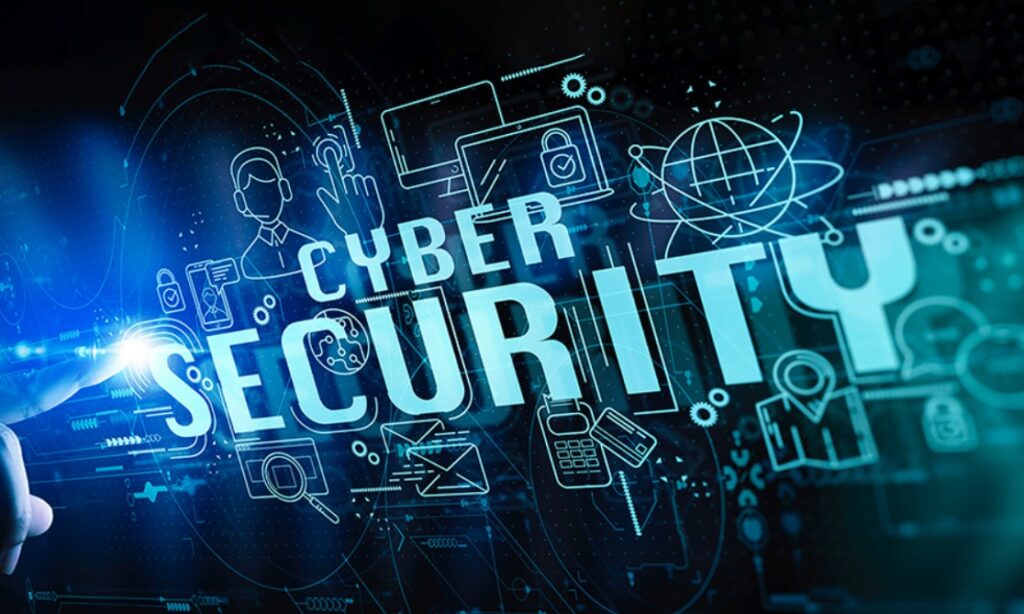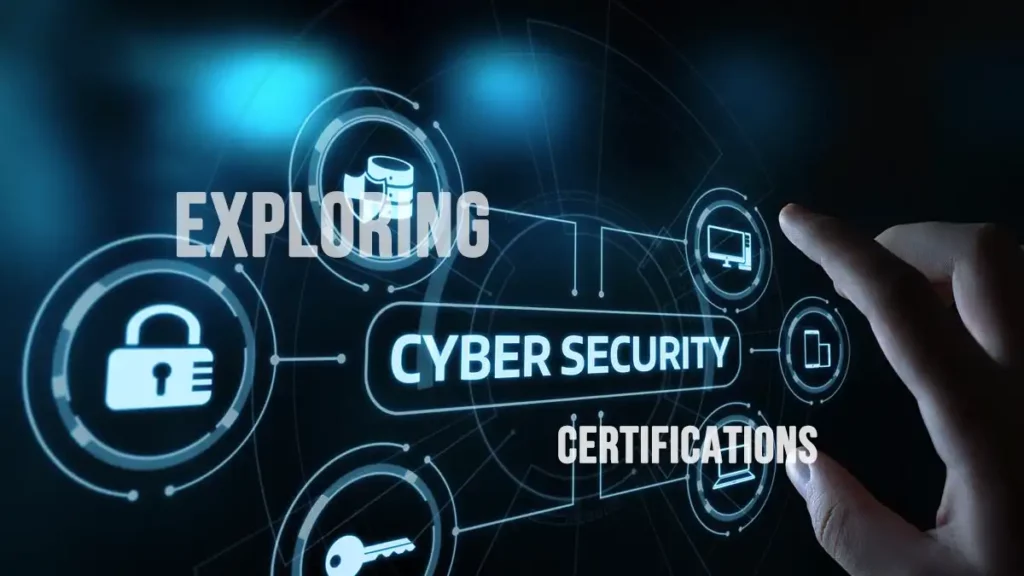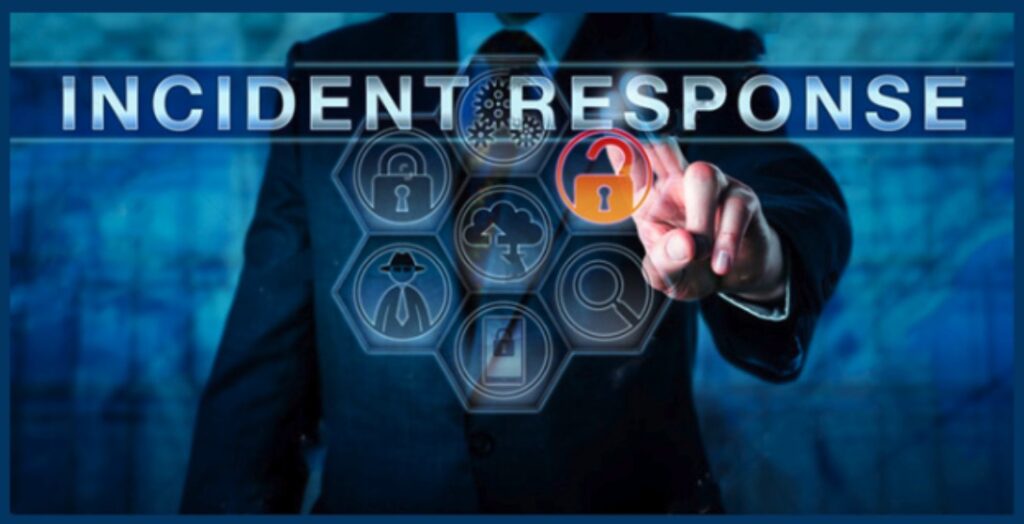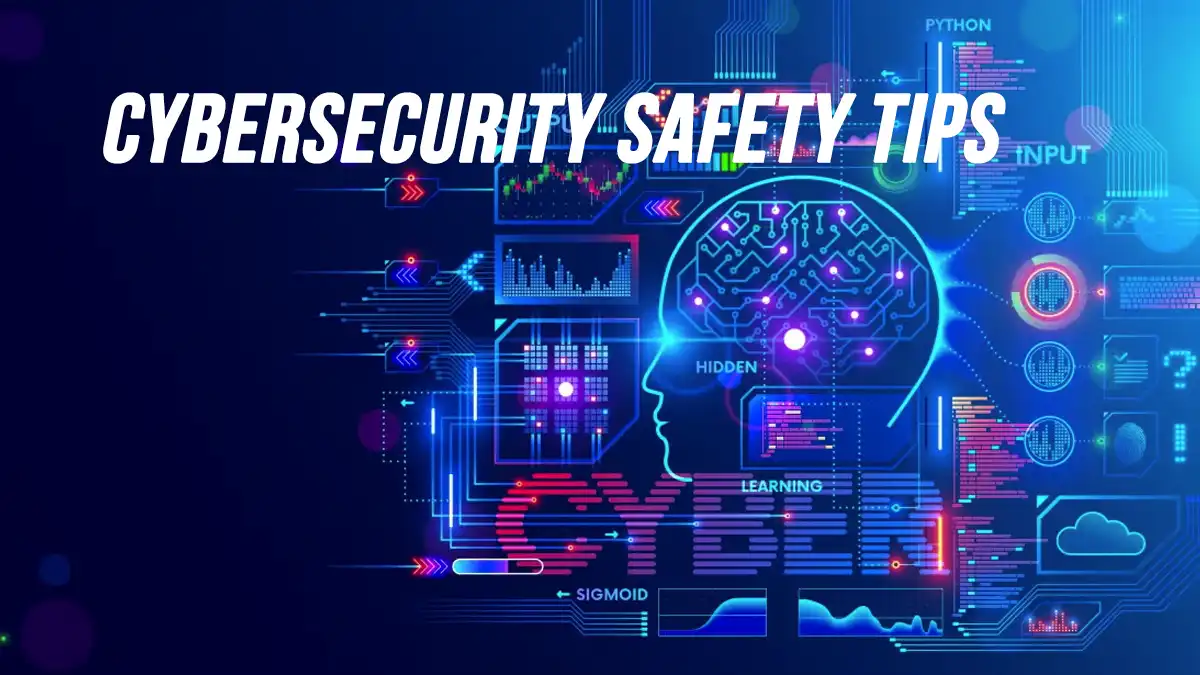Cybersecurity Safety Tips – In today’s digital age, where every click can lead to a world of possibilities—or potential pitfalls—understanding cybersecurity[1] has never been more crucial. Cybersecurity Safety Tips With cyber threats evolving at lightning speed, protecting your personal information and assets is no longer just an option; it’s a necessity.
Whether you’re a seasoned professional or just starting to explore the vast landscape of cybersecurity, this guide will unveil the essential secrets you need to stay safe. From recognizing common threats to implementing best practices that safeguard your digital life, we’ll break down the complexities of cybersecurity into actionable insights. Cybersecurity Safety Tips Join us as we unlock the secrets that will empower you to navigate the digital realm confidently and securely. Your safety is just a few clicks away!
Introduction to Cybersecurity

In today’s technology-driven world, cybersecurity is crucial as our digital lives grow more vulnerable. It involves protecting systems, networks, and data from attacks, theft, and damage. Cyber threats like malware, phishing, and ransomware put personal information, business assets, and even national security at risk.
Cybersecurity isn’t just for large companies or governments; individuals and small businesses are often targeted as well. Cybersecurity Safety Tips With the rise of new technologies and remote work, the landscape of cyber threats is constantly evolving. Cybersecurity Safety Tips Understanding the basics of cybersecurity is essential for everyone to stay safe online.
Cybersecurity Careers

The field of cybersecurity is rapidly expanding, driven by the increasing prevalence of cyber threats and the growing need for skilled professionals to combat them. Cybersecurity Safety Tips Cybersecurity Safety Tips As organizations recognize the importance of safeguarding their digital assets, a diverse array of career opportunities in cybersecurity has emerged. Cybersecurity Safety Tips This section explores various career paths, required skills, educational backgrounds, and the future landscape of cybersecurity jobs.
Security Analyst:
- Role: Security analysts monitor networks for security breaches, conduct vulnerability assessments, and respond to incidents. They analyze security measures and recommend improvements.
- Skills: Proficiency in security tools, knowledge of security frameworks, and strong analytical skills.
Security Engineer:
- Role: Security engineers design and implement security solutions to protect an organization’s infrastructure. They build secure systems, conduct penetration testing, and manage security technologies.
- Skills: Expertise in network security, familiarity with encryption technologies, and experience with coding and scripting.
Security Consultant:
- Role: Security consultants assess organizations’ security policies and practices, providing recommendations for improvements. They often work on a project basis for multiple clients.
- Skills: Strong communication skills, in-depth knowledge of security standards, and the ability to analyze complex systems.
Incident Responder:
- Role: Incident responders manage and mitigate security incidents. Cybersecurity Safety Tips They investigate breaches, perform forensic analysis, and develop incident response plans.
- Skills: Experience in digital forensics, knowledge of incident response tools, and the ability to work under pressure.
Penetration Tester (Ethical Hacker):
- Role: Penetration testers simulate cyberattacks to identify vulnerabilities in systems and networks. They provide reports on security weaknesses and suggest remedies.
- Skills: Proficiency in hacking techniques, knowledge of programming languages, and familiarity with security testing tools.
Chief Information Security Officer (CISO):
- Role: The CISO is responsible for an organization’s overall security strategy and implementation. They lead security teams, manage budgets, and communicate with executive management.
- Skills: Strong leadership abilities, strategic thinking, and comprehensive knowledge of risk management.
Security Architect:
- Role: Security architects design robust security structures within an organization’s IT framework. They develop security policies and ensure compliance with regulations.
- Skills: Extensive experience in security technologies, an understanding of system architecture, and strong analytical skills.
Compliance Analyst:
- Role: Compliance analysts ensure that organizations adhere to regulatory requirements and internal policies. They conduct audits and assessments to identify compliance gaps.
- Skills: Knowledge of regulatory standards (e.g., GDPR, HIPAA), attention to detail, and strong communication skills.
Exploring Cyber Security Certifications

Exploring cybersecurity certifications can feel overwhelming, but they’re essential for anyone looking to boost their skills in today’s digital world. With so many options out there, it’s helpful to know which certifications align with your career goals. From CompTIA Security+ to Certified Information Systems Security Professional (CISSP), each cert has its own focus and requirements.
Plus, as you dive into this journey, don’t forget to pick up some Cybersecurity Safety Tips along the way! Simple practices like strong password management and regular software updates can make a huge difference. Whether you’re just starting or looking to level up, these certifications can open doors and help you stay ahead in the ever-evolving cybersecurity landscape. Ready to dive in? Let’s go!
Skills and Qualifications
To pursue a career in cybersecurity, candidates typically need a combination of technical skills, certifications, and relevant experience. Cybersecurity Safety Tips Here are some key qualifications:
- Educational Background: While many cybersecurity professionals hold degrees in computer science, information technology, or a related field, there are also successful practitioners with non-traditional backgrounds who have transitioned into the field.
- Certifications: Industry-recognized certifications can significantly enhance a candidate’s employability. Popular certifications include:
- Certified Information Systems Security Professional (CISSP)
- Certified Ethical Hacker (CEH)
- CompTIA Security+
- Certified Information Security Manager (CISM)
- Certified Information Systems Auditor (CISA)
- Technical Skills: Proficiency in programming languages (such as Python or Java), familiarity with operating systems (Linux, Windows), and knowledge of networking concepts are essential for many roles.
- Soft Skills: Effective communication, problem-solving abilities, and a proactive mindset are crucial for collaborating with teams and addressing security challenges.
The Future of Cybersecurity Careers
The demand for cybersecurity professionals continues to rise as organizations face an ever-evolving threat landscape. Cybersecurity Safety Tips Several factors contribute to the promising outlook for cybersecurity careers:
- Increasing Cyber Threats: As cyberattacks become more sophisticated, the need for skilled professionals who can defend against these threats will grow.
- Regulatory Compliance: With stringent regulations governing data protection, organizations must ensure compliance, driving demand for compliance analysts and consultants.
- Emerging Technologies: The rise of technologies like artificial intelligence, cloud computing, and the Internet of Things (IoT) presents new security challenges, creating opportunities for specialists in these areas.
- Remote Work: The shift to remote work has expanded the attack surface for organizations, increasing the need for cybersecurity professionals to secure remote access and endpoints.
- Career Advancement: Cybersecurity offers a clear career progression, with opportunities to move into leadership positions, specialize in niche areas, or transition to related fields such as risk management or data privacy.
- Cybersecurity Certifications
Cyber Security Importance

In today’s digital world, understanding the importance of cybersecurity is crucial for everyone, whether you’re a business owner or just browsing online. Cybersecurity Safety Tips Cyber threats are everywhere, and they can wreak havoc on your personal information and financial security.
That’s why knowing some essential cybersecurity safety tips can make all the difference! For instance, using strong, unique passwords and enabling two-factor authentication can keep your accounts much safer.
Did you know that over 60% of small businesses experience cyberattacks? By being proactive and educating yourself on potential risks, you not only protect your data but also contribute to a safer online environment for everyone. Cybersecurity Safety Tips So, let’s take these steps together and ensure we’re all cyber-savvy!
Best Practices in Cybersecurity
Cybersecurity Safety Tips Offer tips for individuals and businesses to enhance their security posture. Include topics like password management, multi-factor authentication, and regular updates.
Cybersecurity Awareness Month
Cybersecurity Safety Tips Highlight activities and resources to promote cybersecurity awareness. Include posters, online workshops, and community events.
Cybersecurity Tools and Technologies
Cybersecurity Safety Tips Review essential tools used in the industry, such as SIEM systems, firewalls, and intrusion detection systems.
Emerging Trends in Cybersecurity
Cybersecurity Safety Tips Analyze the latest trends, including AI in cybersecurity, the rise of ransomware, and zero trust architectures.
Educational Pathways in Cybersecurity
Embarking on a career in cybersecurity requires a blend of formal education, practical experience, and continuous learning. Cybersecurity Safety Tips As the field evolves rapidly, various educational pathways can equip aspiring cybersecurity professionals with the skills and knowledge necessary to navigate this dynamic landscape.
1. Formal Education
- Bachelor’s Degree: Many cybersecurity professionals start with a bachelor’s degree in cybersecurity, information technology, computer science, or a related field. These programs typically cover foundational topics such as network security, systems administration, and ethical hacking.
- Master’s Degree: For those looking to advance their careers, a master’s degree in cybersecurity or information assurance can provide deeper insights into specialized areas, such as risk management, cryptography, and advanced threat detection.
- Certifications: Certifications play a crucial role in demonstrating expertise and commitment. Popular certifications include:
- CompTIA Security+: Ideal for entry-level professionals.
- Certified Information Systems Security Professional (CISSP): Recognized globally for advanced practitioners.
- Certified Ethical Hacker (CEH): Focuses on offensive security techniques.
2. Bootcamps and Online Courses
- Cybersecurity Bootcamps: These intensive, short-term programs focus on hands-on skills and practical knowledge, preparing participants for immediate entry into the workforce. Bootcamps often cover key areas like penetration testing, incident response, and security compliance.
- Online Courses: Many platforms, such as Coursera, edX, and Udemy, offer flexible online courses that cater to different skill levels. These courses can range from introductory cybersecurity topics to advanced specializations.
3. Practical Experience
- Internships: Gaining practical experience through internships can be invaluable. Internships provide exposure to real-world challenges and allow students to apply their knowledge in a professional environment.
- Labs and Simulations: Many educational programs include lab components or access to virtual environments where students can practice skills in safe, controlled settings.
4. Continuous Learning
- Conferences and Workshops: Attending industry conferences and workshops helps professionals stay updated on the latest trends, tools, and threats in cybersecurity.
- Networking: Joining professional organizations and online communities can facilitate networking with industry experts, providing opportunities for mentorship and collaboration.
Cybersecurity for Small Businesses
Cybersecurity Safety Tips In today’s digital landscape, small businesses are increasingly becoming targets for cyberattacks. Despite common misconceptions that cybercriminals focus only on larger organizations, small businesses often lack the robust security measures of their bigger counterparts, making them attractive targets.
Cybersecurity Safety Tips This section delves into the unique cybersecurity challenges faced by small businesses, essential strategies to enhance security, and the importance of creating a culture of cybersecurity awareness within the organization.
Types of Cyber Threats:
- Phishing Attacks: These deceptive emails trick employees into revealing sensitive information or downloading malware. Phishing attacks are often tailored to appear legitimate, increasing their chances of success.
- Ransomware: Cybercriminals deploy ransomware to encrypt business data, demanding payment for its release. Small businesses are particularly vulnerable as they may not have adequate backups or recovery plans in place.
- Data Breaches: Unauthorized access to sensitive information can lead to severe reputational and financial damage. Small businesses may store customer data, financial records, and intellectual property, making them enticing targets.
- Insider Threats: Employees, whether malicious or unwitting, can pose risks to cybersecurity. Insider threats can lead to unintentional data leaks or deliberate sabotage.
Impact of Cyber Incidents:
- Financial Loss: Cyberattacks can result in significant financial losses, including recovery costs, fines, and lost revenue during downtime.
- Reputation Damage: A successful cyberattack can erode customer trust and lead to a loss of business. Customers may hesitate to engage with companies that have experienced data breaches.
- Legal Consequences: Non-compliance with regulations regarding data protection can lead to hefty fines and legal challenges.
Top Cyber Security Degrees for Future Professionals

Thinking about diving into the world of cybersecurity? Choosing the right degree can set you on the path to success! Some of the top cybersecurity degrees include programs in information technology, computer science, and specialized cybersecurity fields. Cybersecurity Safety Tips Many schools even offer hands-on labs and internships to give you real-world experience.
As you explore your options, don’t forget to keep some cybersecurity safety tips in mind—like safeguarding your personal data and being cautious about sharing information online. Cybersecurity Safety Tips With the demand for skilled professionals skyrocketing, investing in a solid education can lead to a fulfilling career, helping you become part of the solution to today’s cyber threats. So, gear up and get ready to protect our digital future!
Essential Cybersecurity Strategies for Small Businesses
Small businesses are often prime targets for cyberattacks, but don’t worry—boosting your defenses is easier than you think! Start with some essential cybersecurity safety tips: regularly update your software to patch vulnerabilities, use strong passwords (and change them often), and train your team on phishing scams.
Did you know that nearly 30% of all cyberattacks target small businesses? By implementing these strategies, you can protect your sensitive data and maintain customer trust. Cybersecurity Safety Tips A little effort goes a long way in keeping your business secure, so let’s get started on fortifying your digital defenses!
Conduct Regular Risk Assessments:
Small businesses should regularly assess their cybersecurity posture to identify vulnerabilities and potential threats. This includes evaluating network security, employee practices, and data protection measures.
Implement Strong Password Policies:
Cybersecurity Safety Tips Encourage the use of strong, unique passwords for all accounts. Consider implementing multi-factor authentication (MFA) to add an additional layer of security.
Invest in Cybersecurity Training:
Training employees on cybersecurity best practices is crucial. Regular workshops and awareness campaigns can help employees recognize phishing attempts, secure sensitive information, and understand the importance of cybersecurity.
Keep Software Up to Date:
Ensure that all software, including operating systems and applications, are regularly updated to patch vulnerabilities. Automate updates where possible to minimize the risk of human oversight.
Use Firewalls and Antivirus Software:
Firewalls act as barriers between a business’s internal network and external threats, while antivirus software helps detect and eliminate malware. Regularly update and monitor these security tools to enhance protection.
Backup Data Regularly:
Implement a robust data backup strategy to ensure that critical information is secure. Cybersecurity Safety Tips Regular backups, stored in a secure location, can mitigate the impact of ransomware attacks and data loss.
Develop an Incident Response Plan:
Prepare for potential cyber incidents by creating a comprehensive incident response plan. This plan should outline steps to take in the event of a breach, including communication protocols, roles and responsibilities, and recovery procedures.
Secure Remote Work Practices:
With the rise of remote work, small businesses must ensure that employees are equipped with secure connections. This includes using Virtual Private Networks (VPNs), securing home networks, and providing secure devices.
Engage with Cybersecurity Professionals:
Consider hiring cybersecurity experts or consulting firms to assess and enhance security measures. These professionals can provide tailored solutions and ongoing support.
Creating a Culture of Cybersecurity Awareness
Building a culture of cybersecurity within the organization is vital for long-term success. Here’s how small businesses can foster this culture:
- Leadership Buy-In: Leadership should prioritize cybersecurity and allocate resources for training, tools, and policies. When leadership emphasizes the importance of cybersecurity, it sets the tone for the entire organization.
- Ongoing Education: Cybersecurity is an evolving field, and continuous education is essential. Regular training sessions, workshops, and updates on new threats can keep employees informed and vigilant.
- Encourage Reporting: Create an environment where employees feel comfortable reporting suspicious activities or potential security breaches. Encourage open communication and provide clear reporting procedures.
- Recognize Good Practices: Acknowledge and reward employees who demonstrate good cybersecurity practices. Positive reinforcement can motivate employees to prioritize security.
Cybersecurity Incidents and Responses
In the realm of cybersecurity, incidents are inevitable, ranging from minor breaches to significant attacks that can disrupt operations and compromise sensitive data. Understanding these incidents, their implications, and the appropriate responses is crucial for maintaining security and resilience in the face of cyber threats.
Types of Cybersecurity Incidents
Cybersecurity incidents can vary widely in nature and impact. Here are some common types:
- Data Breaches: Unauthorized access to sensitive information, such as personal identification details, financial records, or intellectual property. Cybersecurity Safety Tips Data breaches can result from hacking, insider threats, or inadequate security measures.
- Malware Attacks: Malicious software designed to disrupt, damage, or gain unauthorized access to systems. Common forms of malware include viruses, worms, Trojans, and ransomware, which can encrypt files and demand payment for their release.
- Phishing Attacks: A tactic used by cybercriminals to deceive individuals into revealing personal information, such as passwords or credit card numbers. Phishing often occurs via email, with attackers posing as legitimate organizations to trick victims.
- Denial-of-Service (DoS) Attacks: These attacks aim to overwhelm a system, making it unavailable to users. DoS attacks can disrupt services and operations, causing significant downtime and loss of revenue.
- Insider Threats: Employees or contractors who intentionally or unintentionally compromise security. Insider threats can arise from disgruntled employees, negligence, or lack of awareness regarding security protocols.
- Supply Chain Attacks: Cybercriminals target third-party vendors or suppliers to infiltrate an organization. These attacks exploit the trust relationships between businesses and their partners.
Incident Response Framework

An effective incident response is vital for mitigating the impact of cybersecurity incidents. The following framework outlines the key stages of incident response:
- Preparation: Organizations should establish a comprehensive incident response plan that includes clear roles, responsibilities, and communication protocols. This stage also involves training employees and conducting regular drills to ensure readiness.
- Identification: Detecting a cybersecurity incident promptly is critical. Cybersecurity Safety Tips Organizations should deploy monitoring tools and threat intelligence to identify potential threats. This phase includes analyzing alerts, logs, and user reports to confirm whether an incident has occurred.
- Containment: Once an incident is confirmed, immediate actions must be taken to contain it and prevent further damage. This may involve isolating affected systems, disabling compromised accounts, or blocking malicious traffic.
- Eradication: After containment, the next step is to eliminate the root cause of the incident. This could involve removing malware, closing vulnerabilities, and implementing patches to prevent recurrence.
- Recovery: Following eradication, organizations should restore systems and services to normal operations. This phase includes verifying the integrity of restored systems and monitoring for any signs of residual threats.
- Lessons Learned: After an incident, it’s crucial to conduct a thorough post-incident review. This evaluation helps identify what went well, what could be improved, and how to enhance the incident response plan. Sharing findings with stakeholders can foster a culture of continuous improvement.
Legal and Regulatory Considerations
Cybersecurity incidents often involve legal and regulatory implications. Cybersecurity Safety Tips Organizations must be aware of laws governing data protection, breach notification requirements, and industry-specific regulations. Failing to comply with these laws can result in significant penalties and damage to an organization’s reputation.
Building a Resilient Cybersecurity Culture
Ultimately, an effective response to cybersecurity incidents relies not only on technical measures but also on fostering a culture of security awareness within the organization. Cybersecurity Safety Tips Employees should be educated about potential threats, best practices for safeguarding information, and the importance of reporting suspicious activities.
In summary, while cybersecurity incidents pose significant challenges, a well-structured incident response framework can help organizations mitigate risks and recover effectively. Cybersecurity Safety Tips By understanding the types of incidents and implementing proactive measures, businesses can strengthen their defenses and minimize the impact of cyber threats.
Conclusion
In summary, the field of cybersecurity offers an exhilarating career path for those passionate about technology and security, with a wealth of opportunities for professional growth. As cyber threats become increasingly sophisticated, the demand for skilled professionals is skyrocketing, making this an ideal moment to dive into the industry.
For small businesses, prioritizing cybersecurity isn’t just about protecting digital assets; it’s essential for maintaining customer trust and ensuring long-term success. Whether you’re seeking formal education or hands-on experience, now is the time to invest in your future. Embrace the challenge—explore the diverse pathways in cybersecurity and take proactive steps to safeguard your business and career today!
FAQ About
-
What is the easiest way to protect my personal information online?
The best way to protect your personal information is by using strong, unique passwords for each account and enabling two-factor authentication (2FA). Cybersecurity Safety TipsAdditionally, avoid sharing sensitive data over public Wi-Fi and be cautious of phishing scams.
-
How can I tell if an email is a phishing attempt?
Phishing emails often appear from unfamiliar senders or imitate trusted ones. They may contain misspellings, request personal information, or include suspicious links or attachments. Always verify the sender’s email address and avoid clicking on unfamiliar links.
-
Should I use a password manager?
Yes, using a password manager is highly recommended. It helps create and store strong, complex passwords securely, reducing the risk of using weak or repeated passwords across different accounts.
-
How can I secure my home Wi-Fi network?
To secure your home Wi-Fi, change the default router login credentials, use WPA3 or WPA2 encryption, set a strong password, and regularly update your router’s firmware.
-
What should I do if I think my device is infected with malware?
If you suspect malware, disconnect from the internet, run a full antivirus scan, and remove any detected threats. Once the malware is removed, update all your software and change your passwords.
Reference
- https://cio-wiki.org/wiki/Cyber_Security#google_vignette
